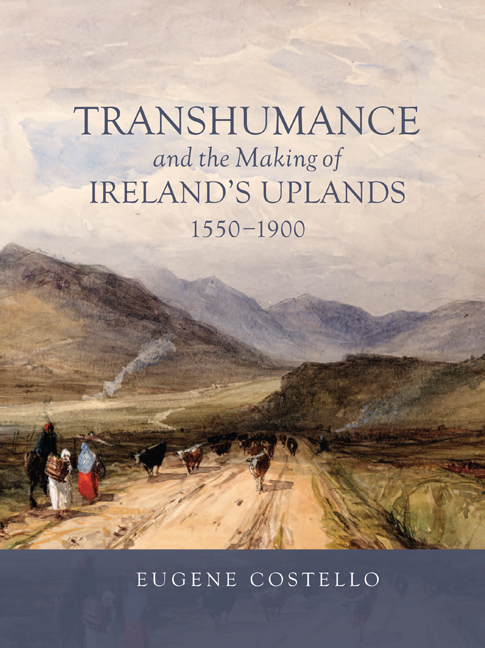Book contents
- Frontmatter
- Contents
- List of Illustrations
- Preface and Acknowledgements
- Note on Chronology
- Introduction
- Chapter 1 Seasonal Movement and Settlement in A World of Pastoralism
- Chapter 2 Imagining Movement: Past and Present Views of Transhumance in Ireland
- Chapter 3 Seasonal Sites in Context: Summer Pastures of the Carna Peninsula
- Chapter 4 Connected Places: Home and Booley in Gleann Cholm Cille Over Time
- Chapter 5 Altitude and Adaptation: Evolving Seasonal Settlement in the Galtee Mountains
- Chapter 6 Herders and Historical Forces, 1600–1900
- Conclusion
- Bibliography
- Index
- Frontmatter
- Contents
- List of Illustrations
- Preface and Acknowledgements
- Note on Chronology
- Introduction
- Chapter 1 Seasonal Movement and Settlement in A World of Pastoralism
- Chapter 2 Imagining Movement: Past and Present Views of Transhumance in Ireland
- Chapter 3 Seasonal Sites in Context: Summer Pastures of the Carna Peninsula
- Chapter 4 Connected Places: Home and Booley in Gleann Cholm Cille Over Time
- Chapter 5 Altitude and Adaptation: Evolving Seasonal Settlement in the Galtee Mountains
- Chapter 6 Herders and Historical Forces, 1600–1900
- Conclusion
- Bibliography
- Index
Summary
BACKGROUND AND JUSTIFICATION
Transhumance is a form of seasonal pastoralism that has been practised around the world for many thousands of years. In basic terms, it is the seasonal movement of people and livestock from one environmental context to another, with the home settlement and main zone of crop production usually found in fertile lowlands or valleys and the summer pastures, such as heaths, wetlands, forests, hills and mountains, located over a wider area in a marginal zone of production. The people who move with the livestock occupy small dwellings in these marginal zones until they all return home for the winter half of the year or longer. As with all definitions of farming systems, however, this statement fails to acknowledge a lot of diversity. Every farming practice is a social practice, influenced by the needs and capabilities of different people and their interactions with one another. Every farming practice is also shaped by the environment, no two farmers having to deal with exactly the same soil fertility, topography or climate. Transhumance is an especially complex farming and social phenomenon in which people exploit, via movement, the seasonality of different environments. If communities are organised to cope with the absence of many of their members and most of their livestock for up to half the year, it becomes possible for them to spare more land for tillage crops and winter fodder, the latter, in turn, allowing them to maximise the size of herd that can be sustained through the winter.
Transhumance was practised in many parts of Ireland up to the nineteenth century and as late as the early twentieth century in the western regions of Connemara and Achill Island. Thus, the question of seasonal pastoral movement and settlement in Ireland is one for students of the past. In the Anglophone scholarship Irish transhumance is often known as ‘booleying’, a term derived from the practice of removing with dairy cattle to summer ‘booley’ settlements in rough hill pastures. However convenient the term may be for an Irish context, its application across the island masks a great deal of regional and local nuance over time. For one thing, ‘booley’ stems from the Irish-language word buaile, which has more than one meaning.
- Type
- Chapter
- Information
- Publisher: Boydell & BrewerPrint publication year: 2020



